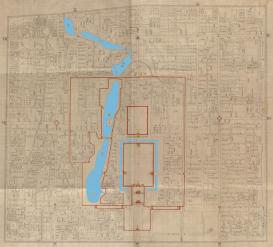In Qing China, the lotus plant was grown on an agricultural scale on bodies of water in plain sight of the emperor near and around the Imperial palace. Its cultivation formed one of the smaller cogwheels in the workings of the “palace machine” that, under the supervision of the Imperial Household Department, generated money, matter, and identity for the Manchu court.
This project traces how the cultivation of the lotus plant was integrated into the planning and organization of the Qing imperial palace, and investigates the plant's dual role as a decorative garden plant when in flower and a common food when its muddy roots were harvested in late autumn. Close examination of administrative regulations (zeli), archival records, agricultural treatises, garden handbooks, anecdotes, and poetry elucidate contemporary ideals and ideas of natural growth, administrative regulation, and usage of space in the Imperial palace and the city of Beijing.

